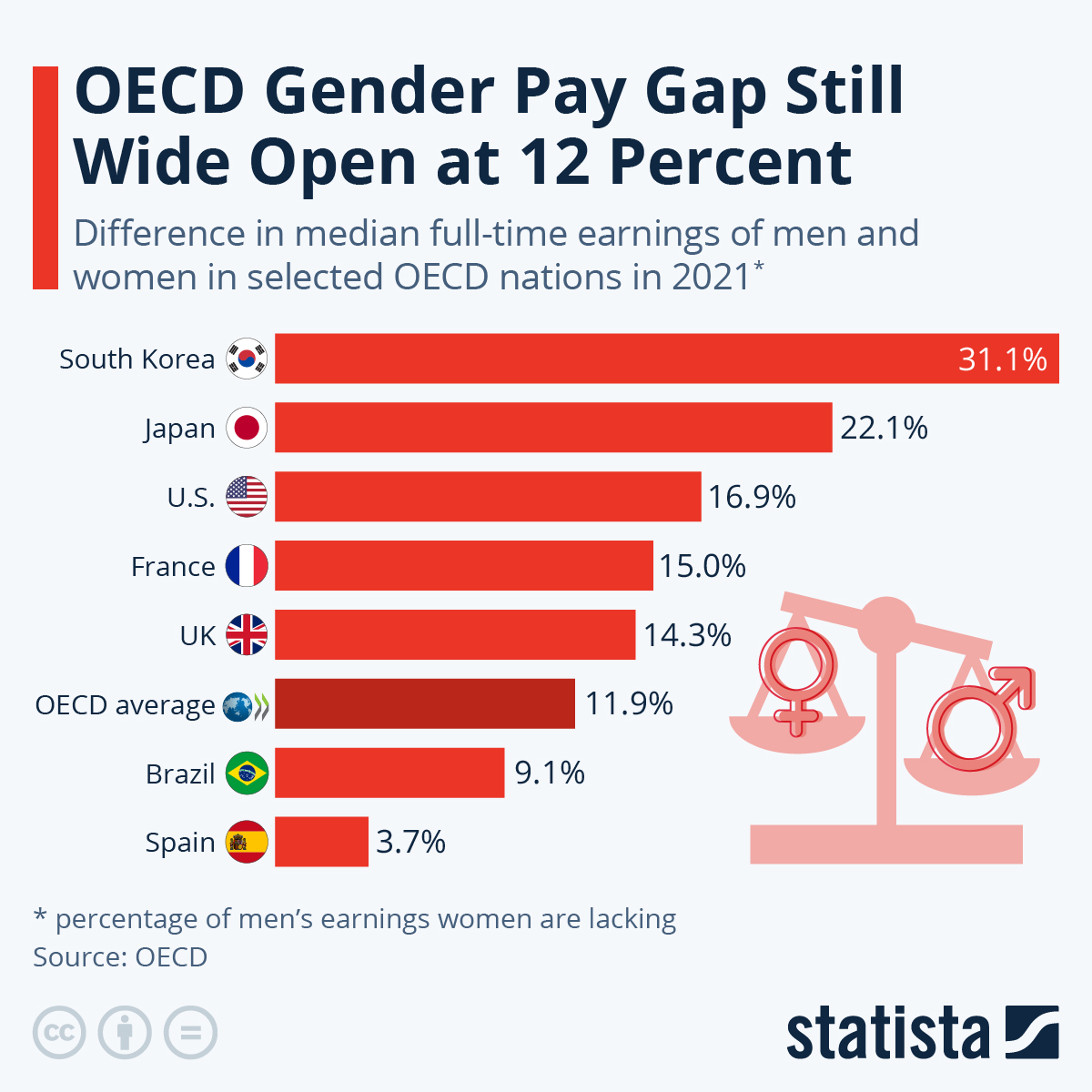According to OECD data , South Korea has the most work to do in order to close the gender wage gap. A male worker in South Korea outearned his female counterparts by 31.1 percent in 2021. The problem is also highly evident in other Asian countries, for example Japan. In 2021, the wage gap between the sexes was 22.1 percent there. Even though things are slightly better in North America, both the U.S. and Canada still have wage gaps of around 17 percent. The OECD average for the year stood at around 12 percent - a large gap caused by women working in lower-paid or part-time positions more often, but also by women earning less than men with comparable jobs.
Among highly developed countries, Spain had one of the smallest gender wage gaps at just 3.7 percent. Conversely, small gender pay gaps or even negative pay gaps can also hint at an economy in crisis where competitive and higher-paid positions typically occupied by men have vanished. Women tend to occupy positions in low-prestige, but stabler parts of the economy, for example education, child and elder care or public administration. Men's employment can take further hits when jobs in manufacturing or related fields disappear due to economic trouble, leading to women out-earning men in some instances.





















